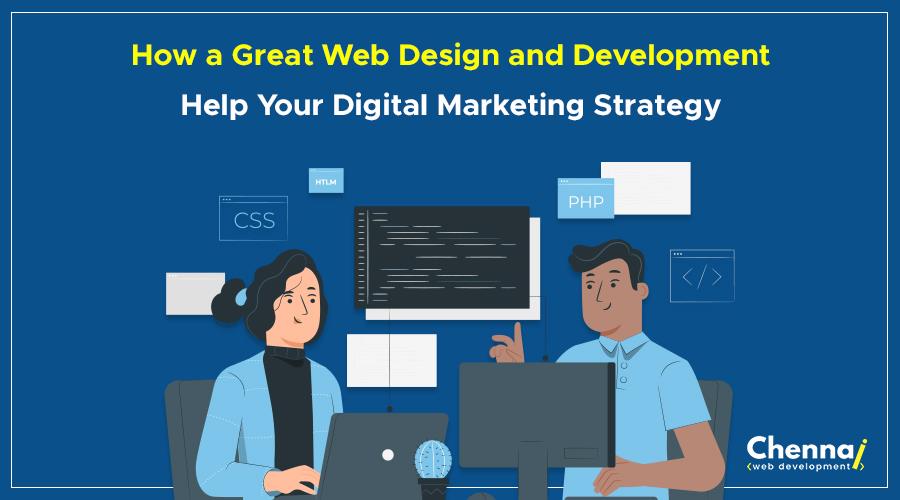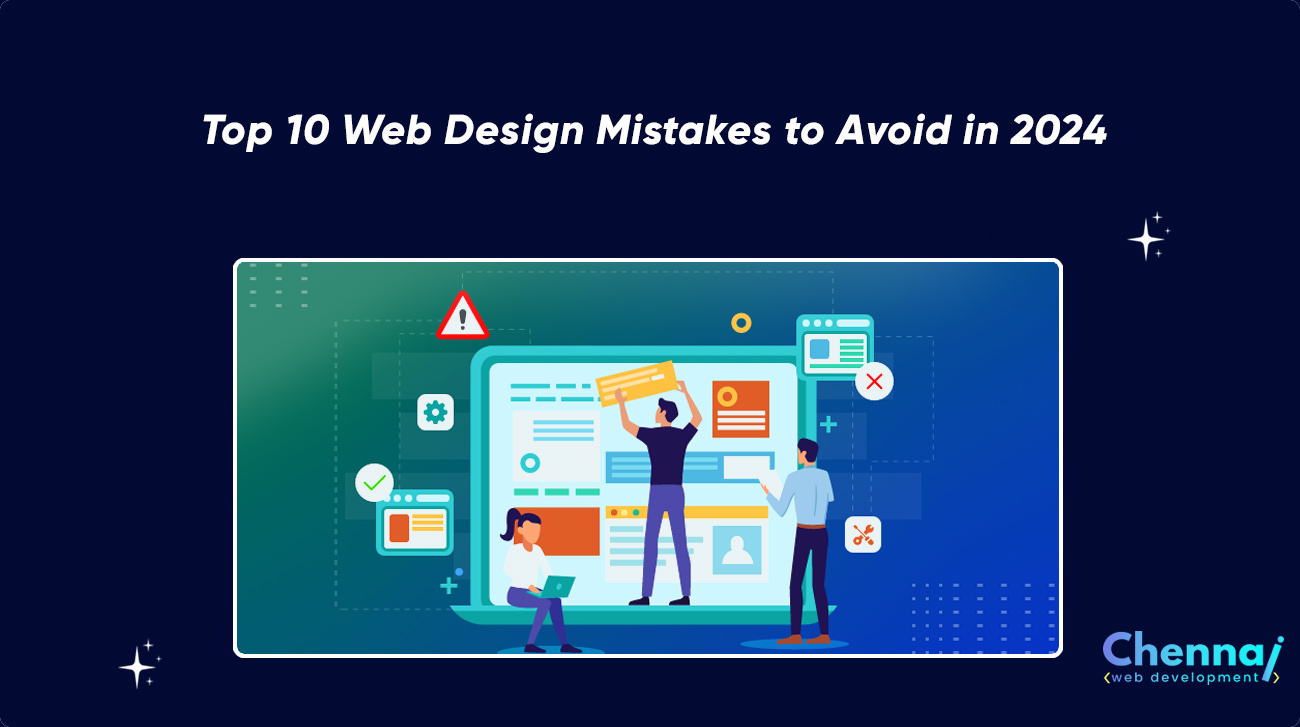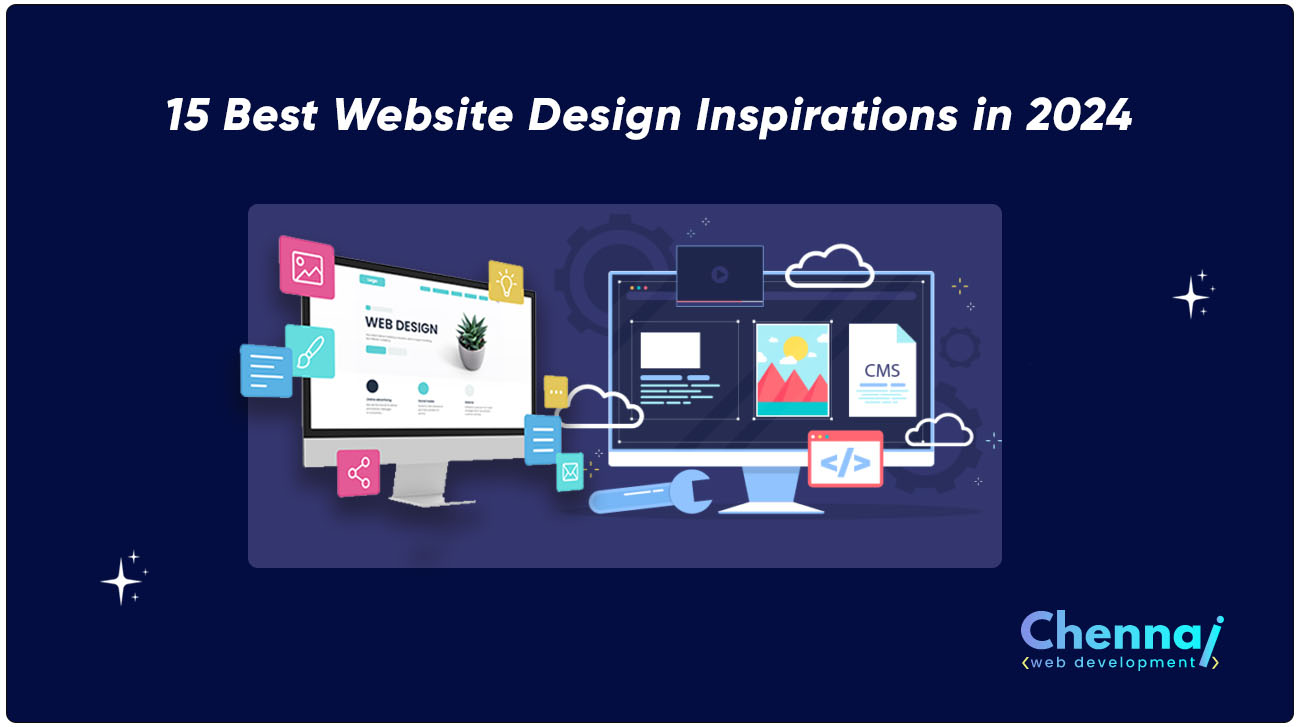We all would be aware that the website is the first place where most of the people in the digitally transformed world get interacted. So, in this article, you will look at the importance of having a great web design and development in your digital marketing strategy.
30-second summary:
- Are you drafted a great digital marketing strategy to drive conversions to your business?
- But, do you know that before drafting the Digital Marketing Strategy guide, it is significant to have a quality website to the success of your digital marketing strategy.
- Therefore, reading this article, you will come to know the impact of web design and development on your digital marketing campaign.
Before drafting your digital marketing plans, first, review whether your website has the following factors:
Conversion rate – Can your website convert leads/prospects?
Competition – are you standing unique among your competitors
Branding – does your website showcase your brand?
SEO – does your website ranks well on search engines?
Responsiveness – is your website responsive?
Site speed – do all your web pages load quickly?
Website Design and Development
Once finished reviewing, if you are not getting the results you’d like and your site isn’t performing efficiently for many of those factors, then it’s going to be worth considering a redesign for your site.
Do you need a redesign for your website?
If you think that you simply need a redesign for your site, then make sure that you simply consider the following factors that we discussed above once you undergo a redesign.
You need to discuss all together with your web designer to ensure that any changes that you apply on your website will have a positive impact.
This is because often a redesign causes an internet site to perform worse than its predecessor. After all, the planning hasn’t considered each of those factors.
For example, if a website that is rich with high-quality images, videos, and interactive content might look great for customers.
However, it’ll reduce your website speed. So, there are high chances to lose your customers. This might increase the bounce rate because users don’t want to wait for a long time to load pages.
1. First Know Your Audience:
Before, redesigning your website, it is vital to understand for whom this website is going to serve?
Consequently, first, identify who is your target audience is and build the location that they’d want. Is it for:
Potential Customers/Leads
Existing Customers/Members
News/Media
Staff/Internal Stakeholders
Public
Other
Once you identified who your target audience is, then you can build personas for every segment and make a user journey around them. This may assist you understand how they get to your site and the way they’d navigate it to succeed in your intended objective.
What does your audience need from your website?
For this, take some time to know your audience’s interests and their online behavior before you create any changes to your website.
It’s often the best idea to compare some designs on your current site before you modify the whole thing.
You can achieve this by having a skilled web designer who can create effective landing pages for your marketing campaigns.
In the next step, consider running some A/B tests together with your email or ad campaigns to ascertain what was simpler.
From there, you’ll further refine the web page by making some slight alterations to the page’s call to action (CTA) to know what works for your audience.
Once you’ve collected the data, you can use it in your plans to create an optimized website.
2. Next, Define Your Website Goals:
What is the intent of your website?
Your digital marketing strategy should define your objectives. These could include lead generation, sales, or brand awareness.
These objectives should be the most important part of any website redesign. When choosing a web designer or agency for your website redesigning, you should convey your goals and ask them to design the site that will meet your objectives.
It is also necessary to line out measurable KPIs for every objective. You’ll base them on conversions, visits, bounce rate, average time on page, or keyword rankings.
To make sure that your website meets your objectives, your website design must consider:
Search Engine Optimisation (SEO)
Conversion Rate Optimisation (CRO)
User Experience (UX)
Brand Identity
3. Search Engine Optimization:
Search engine optimization is about increasing your organic traffic on search engines, which may be achieved through various on and off-site techniques.
Your site must be seen on SERP because roughly 93% of online activity starts on a search engine.
And with around 60% of searches happening on a mobile, it is essential to have a responsive website.
Therefore, today most of the websites are built with responsive in mind, but there’s are still a large number of devices that they aren’t responsive, and compatible. Thus, creating frustration once you need to use one on mobile.
Apart from responsive, a web designer should believe other on-page optimization activities, like improving the content, navigation, and technical areas of the location.
Any changes that you simply make to the location may impact your SEO performance for better or worse, which can affect your rankings in search engines like Bing and Google.
The following are the factors that you need to keep in mind to create a good web design.
Structure and navigation
You want to design a web page that is as easy as possible for users to navigate your site. It’ll also help bots to make a map of your website once they crawl it.
Aesthetics
While not as important as user-friendliness, your design should look great to make users stay on your website and to revisit it.
Metadata
Metadata and description are the most important part. This will helps bots as well as the audience to understand what the content is all about.
Furthermore, it’s is the primary thing that a user sees within the SERPs and can determine whether or not they click on your link or not.
Content
A site should have functionality for creating new content so that you’ve got more pages indexed in Google.
This may increase the possibility that your site is going to be found on search engines and means there’s more information about your website on the web.
A site that’s always updated with newer content will get crawled by Google more frequently.
If your current website isn’t optimized for navigation, speed, and style, then you’ll have a web designer build your site so that these factors are taken into consideration.
They should be considered as a part of the UX design also.
4. Conversion Rate Optimization:
Conversion Rate Optimisation is the process of improving your site to increase the possibilities that a user will complete the desired action and improve your conversion rate (CR).
A conversion doesn’t always need to be a product purchase, it’ll entirely depend upon your goals too. It can include:
Contact Form Submissions
Email Submissions
Booking Completion
Account Creation
Transaction Completion
For this, you need to design your site, that can drives users to those call to actions.
An experienced web design team can make all the difference because they are skilled to make the balance between appearance and efficiency.
If you prepare them on your objectives they’re going to consider it within the planning stages, which implies that you simply are going to be within the best position to refine your website for CRO.
While the management and analysis of CRO are right down to your marketing team, they’ll need the support of designers to form the foremost of A/B and multivariate testing.
5. User Experience (UX):
User Experience is all about user satisfaction. Once you design a website, you would like it to be easy-to-use, accessible, and worthwhile for your user.
For this, you must consider UX design. It is important to web design and it’s closely linked with SEO and CRO.
Search engines always try to meet what a user wants with the foremost relevant websites, which can think about sites with the simplest UX.
And once you are optimizing your website to convert, you’ll need a site that considers the user journey across your site.
A visually appealing website is essential as they’re going to have a greater emotional response by seeing something that they find pleasing.
However, tons of websites prioritize looks over functionality. This is often dangerous because users might just like the look of a site, but if they find it difficult to use and pages take a long time to load, then they’re unlikely to possess an excellent experience and return.
Getting this right might sound like an impossible job, but a top-quality web designer is going to be ready to mix good aesthetics with performance.
Once everything is complete, you need to regularly test it to reinforce the user experience.
6. Brand Identity:
A website is what reflects who you are and what your business is. Most of the people will get a first impression of your brand by visiting your website, so confirm that you’re proud of how it’s designed.
Brand identity is vital to UX and CRO because it builds trust between the user and your business and it’ll influence their decision making.
Poor experience on your website will reflect on your brand and will harm performance.
If your brand prides itself on being simple, quick, and straightforward, then your site experience should reflect this through navigation, structure, and visuals.
Tell your designer on your brand guidelines, values, and messages and confirm that they translate it to your website.
Conclusion
The impact of web design and development on your entire digital marketing strategy is huge.
From website user experience to branding, SEO, and CRO, web design plays an important role in how your brand is perceived. Leverage it to ensure your business thrives in the digital age.
If you need a redesign or want to create a new website design. We at Chennai web development has passionate web designers who create a unique and stylish design that suits best to the customers and your targeted audience.
- Top 5 Google Ads Business Growth Plan in 1 Month - April 23, 2021
- Why Your Fashion Brand Needs Professional Website Design? - April 5, 2021
- #14 Powerful Digital Marketing Trends for businesses in 2021 - March 17, 2021



